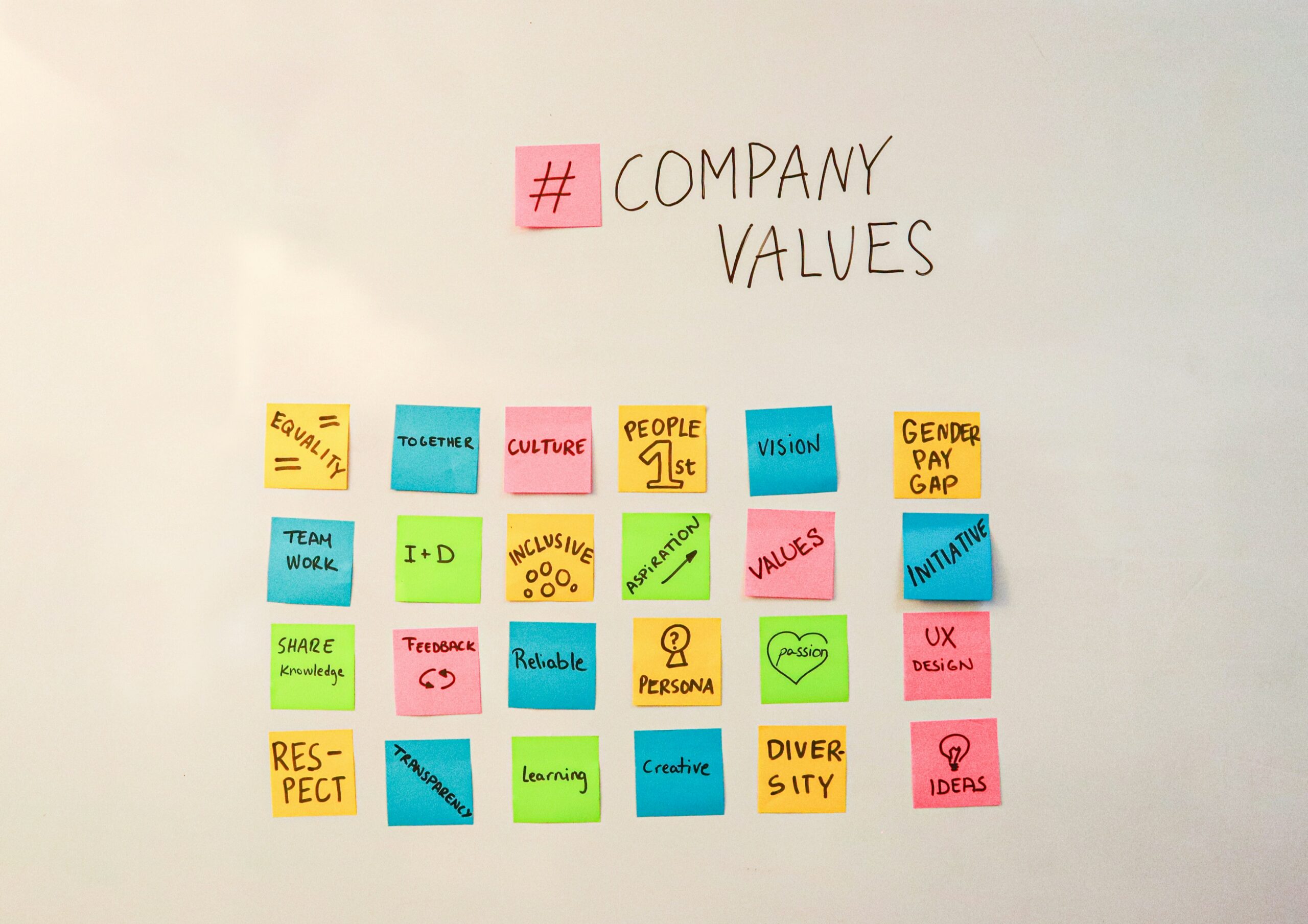Our easy-to-use diagnostic tool provides a methodical approach to crisis management, recovery and reinvention.
The working world has reacted to COVID-19 with speed and responsibility. Social-distancing measures and government-backed furloughing schemes seem to have been effective at slowing the spread of the virus.
But as governments cautiously relax lockdown measures, leaders must look to what comes next and how they can begin to adapt their organizations to the world beyond the pandemic. Specifically, how do you build resilience into your operations, decisions, business model and ways of working so your company can weather future disruption?
COVID-19 Enterprise Resilience Tool
The tool is an easy, pragmatic way to understand the resilience of your enterprise, and enable you to more clearly prioritize your actions. Its purpose is to help you assess these nine areas, providing structure in the midst of chaos, and prompting you to consider elements which might otherwise be overlooked. It enables you, at a glance, to identify where you need further efforts or assistance, and is designed to be continually referred to as part of your ongoing leadership crisis meetings. Additionally, it can be used as a solid foundation upon which your corporate strategy can be shifted or rebuilt.
Here are nine ways leaders can reframe the future of their organizations to increase resiliency in the uncertain months ahead.
1. Employee health and wellbeing
A physical return to the workplace or work site is now the priority for many organizations, particularly in industries where physical workforce presence is critical to reopening businesses. The critical imperative is ensuring a trusted transition back to workplaces with proper health and safety protocols and monitoring. This imperative requires new or enhanced health and safety capabilities including workforce testing, certification, tracking and tracing to actively assess and manage workforce health, capacity planning and changes to workspace layout to limit group interactions, and cleaning and sanitization. It also requires new technology and partners to conduct testing, store data, track protocols and interventions, and to train and communicate with the workforce.
Can employees even safely commute to and from the workplace? Go/no-go-decisions can only be made after answering these questions using reopening criteria and a schedule determined and based on data and guidance from government and scientific authorities.
2. Talent and workforce
To understand how you need to protect the health and safety of your workforce, you first need to determine where and how it will work. How do you define who returns to the physical workplace and who remains remote? Which parts of your business should remain on hold based on demand? What is the team and shift/phased schedule? How do you adopt new ways of remote working to ensure it’s sustainable? Are the right teams and capabilities in place? Do you have the right technology to support your workforce?
Organizations first need to decide how to segment and schedule employees’ physical return to work. That requires scenario planning, for example, in a factory that’s restarting production of an in-demand product after a shutdown: line operators will need to be deployed in shifts, but supervisors and managers can be equipped with digital tools to help them oversee production without actually being on the shopfloor, or even in the building. Longer term, you’ll need to see how to streamline and automate processes that frayed during the crisis and what new or enhanced capabilities are needed that could require workforce upskilling.
Employees may be understandably apprehensive about the reopening of workplaces, and leaders need to listen carefully to what they are saying and feeling. Senior managers may require readiness-training to help guide and support teams, and more frequent communication across the organizations is critical. There should be channels in place for employees to support each other as they readjust to a working life that may be a blend of remote and on-premise, especially as fragmented teams need to communicate socially as well as on project-related issues. New ways of working at the physical workplace or remotely will be needed to ensure safety, productivity and engagement of the workforce.
The first step is deciding how to segment and schedule employees’ physical return to work. Longer term, organizations will need to identify how to streamline processes that frayed during the crisis. They will also need to consider what enhanced capabilities might be needed together with associated workforce upskilling.
3. Supply chain and global trade
All supply chains have experienced disruption. The task now is to address these challenges while re-tooling supply chains for greater resilience, end-to-end visibility – and reducing costs.
Organizations should conduct regular supply chain resilience assessments to define strategy and capability build-out, and conduct stress tests to anticipate future disruption. Transitioning from a linear to a networked ecosystem, where internal and external data is in the cloud, allows supply chain activity to be seen by all and worked on simultaneously. This end-to-end visibility can match supply to demand by analyzing data around inventory, network, hubs and nodes, identifying single points of failure, such as supply concentration.
Supply-chain decisions influence up to 75% of corporate costs, and organizations may also achieve reductions in selling, general and administrative expenses through contract reviews and sourcing events, and improve margins and the cost of goods sold through simplifying products, rationalizing the portfolio and optimizing asset utilization.
Factories face challenges to restarting production. Which products are needed most? Which sites should reopen, and when? How do you initiate turning machines back on? Manufacturers know how to plan a new factory or an overhaul, but restarting operations is an unprecedented technical challenge.
Finally, customer access to services is a major consideration. Operations need to be reframed around different delivery channels – for example, consumers have shifted rapidly to e-commerce and home delivery, forcing retailers to follow. This change in behaviour seems likely to stay, and among the many lasting impacts of the pandemic may be the need to invest in better access to goods and services via websites or apps, and to change the physical design and layout of stores to ensure long-term social distancing.
4. Customer and brand
The pandemic is forcing a reassessment of values, habits and consumption patterns, and many of these won’t reverse. The EY Future Consumer Index finds more than a third of consumers plan to spend less – and 13% of all consumers plan to make deep cuts.
Companies are going to need to reframe their futures around very different digital behaviors. Business must act across four customer-strategy areas critical to creating value.
To engage customers, take a disciplined approach to consumer segmentation, nurturing and lead generation, and move faster to drive marketing and communications agility, including refreshed loyalty programs.
In growth drivers, shift the mix to new sales channels and extract value from existing innovation to drive product strategy. In customer experience, prioritize (digital) customer journeys and new means of engagement, experience and service. And address the physical/digital divide, particularly solving delivery and last-mile challenges.
The crisis continues to be a test of brand protection. Organizations can build trust through demand fulfilment and innovative offerings. But building wider long-term value is also critical – whether it’s building trust in capital markets, having a positive social and environmental impact, or creating an inclusive culture of personal development and purpose.
5. Financial and investor
After an historic period of greatly reduced economic activity, executives recognize operating expenses will have to be reduced for an extended period of time to reflect the drop in revenue. They now know the immediate actions they took in March will not be enough, and require a rebalancing of short-term cash flow needs with long-term success.
An obvious target is personnel, but cutting too deeply could be unwise for some companies – human capital is often core to an organization’s ability to create longer-term value. Where cuts are required, these should be targeted strategically in order to maintain and build the critical capabilities required for ongoing success.
Workforce productivity will continue to be increasingly important for success. Executives must consider all available opportunities to aggressively leverage current and emerging technologies and make their organizations more productive and scalable. Advances in analytics, robotic process automation, artificial intelligence, outsourcing, and other technology-enabled capabilities should be considered as part of any organizational operating model redesign.
Spend on third parties is also a major driver of costs for many companies. Executives should rationalize their external spend and aggressively reduce the drivers of demand for this spend. Additionally, they should look to renegotiate the contract terms and reduce prices paid for these external goods and services. Reducing this type of indirect third party spend does not typically affect a company’s ability to win in the marketplace in the short or long-term.
The pandemic has proven people can work effectively from home, so a permanent place of work may no longer be necessary. How much could be saved by providing occasional meeting spaces and the right infrastructure for remote working, rather than offices, particularly in prime locations? In light of this fundamental shift, the real estate and construction sectors must prepare to reframe their future and innovate new models in order to adapt to life beyond COVID-19.
Private-equity (PE) firms must rapidly assess and take action in their portfolio companies. Although some PE-owned companies, particularly those in the technology and grocery industries, may have increased in value, the majority will be challenged to service highly leveraged balance sheets in the face of dramatically reduced revenues. This pandemic should be seen as a forcing function to lower and “variable-ize” cost structures and to make companies more resilient. Some PE investors will also be able to capitalize on this historic period to acquire the heavily discounted debt of their own companies, though tax implications need to be considered. The unfortunate truth is that most PE investors who have deployed considerable capital at high valuations in the years preceding COVID-19 will likely expect, and get, lower returns. Investors that have resisted deploying capital in recent years will be able to capitalize on reduced purchase prices and more distressed sellers.
As we emerge from the crisis, governments will eventually return to policies that will attempt to shrink historic levels of debt. After the 2007-09 financial crisis, governments across the globe began looking for revenue, and they found it in three places: increased compliance measures, many implemented through increased transparency and digitalization of tax administrations; a proliferation of indirect taxes; and increases in direct taxes. Organizations should prepare for all and any of these measures.
Either way, communicate, communicate, communicate. Investors expect transparency, and their trust in organizations is directly linked to how they handle the crisis and the clarity of next steps. Most significant of all is the impact of the crisis on business models: organizations should analyze mega trends and implications for their business model, and prioritize the ramp-up and scaling of new approaches
After the 2007-09 global financial crisis, governments found revenue in three places: increased compliance measures, a proliferation of indirect taxes, and increases in direct taxes. Organizations should prepare for all and any of these measures.
6. Risk
Many people speak of COVID-19 as a “black swan,” or a kind of unforeseen catastrophic event. Yet a global pandemic was bound to happen sooner or later, following in the footsteps of swine flu, Ebola and SARS. In fact, it was more of a “grey rhino” – in front of and moving slowly toward us, but too uncomfortable or inconvenient for us to face it.
For many organizations, continuity planning before the pandemic was IT-driven and lacking agility, complexity and detail, which made it harder to react when the pandemic struck. Building enterprise resilience means relying more on data-driven intelligence in risk management, modeling scenarios to make more intelligent decisions without emotional bias.
With better preparation and more warning of potential disruptions, you adapt much faster – benefitting almost every facet of your organization.
7. Government and public policy
The easing of lockdown restrictions is an equal, if not greater, challenge to governments than their initial response to COVID-19. In the absence of a vaccine, they must balance planning and communication about returning to more normal social behavior with the enforcement of safety and social-distancing measures. Restrictions are likely to be turned on and off according to infection rates among populations, so businesses will need to ready to adapt. This will have implications for consumers, with reduced demand in uncertain times.
Government-backed furloughing schemes have helped thousands of businesses survive. But they can’t continue indefinitely. Businesses should continuously monitor how government financial assistance programs are evolving and assess how the withdrawal of these programs will impact their finances and those of their customers. There’s also the prospect of funding massive, complex public programs that are interlinked and depend on both funding and the availability of talent and labor that may currently be furloughed or unable to attend work without access to public transport.
The crisis has exposed the risks of long international supply chains for essential items such as food, health equipment and pharmaceuticals. If there is not enough of these items in a crisis, the government is ultimately held accountable. Governments will seek to boost resilience in particular sectors by encouraging or even mandating actions to localize supply chains.
Sustainability – with an emphasis on climate change – remains one of the defining issues of our generation and carbon mitigation proposals are proliferating. One of the most significant is the EU Green Deal (EGD), a legislative road map issued in late 2019. For economies facing increasing government deficits, carbon regimes provide a clear policy alternative and touch on several economic, environmental, and industry issues. Businesses need to think about all of these factors to understand how current proposals and potential widespread strategies will affect their business.
Governments are likely to be more active in the economy generally for the foreseeable future. Business leaders should deepen their understanding of the public policy landscape and the health data that underpins government decision-making. This will help them anticipate and prepare for government action, which is likely to come at shorter notice and with less consultation.
Governments are likely to be more active in the economy. Business leaders should deepen their understanding of the public policy landscape and the health data that underpins government decision-making. This will enable anticipation and preparation for government action, which is likely to come at shorter notice and with less consultation.
8. Technology and information security
Technology will underpin every aspect of how organizations reframe the future. Organizations farther down the road to digital transformation were better able to adapt to COVID-19, and those slower to embrace digitalization and automation must accelerate.
Technology will need to work for us and facilitate new ways of working that rely less on physical interaction and, at the same time, reduce costs. There must be aggressive analysis of greater enterprise collaboration, cloud and automation adoption to realize performance benefits, and cybersecurity can become more of a business resource and transformation enabler. On a more practical level, software patching, network and core technology foundation services’ upgrade strategies must be accelerated.
Wider questions should also be considered. Will technology-driven crisis responses shift societal norms and government regulations on data and intellectual property? And how will accelerating technology competition affect the operations and supply chains of companies across sectors?
9. Insurance and legal disputes
Following the initial crisis response period, which focused heavily on understanding multi-country labor and employment law obligations, companies are considering how to operate once restrictions are lifted. The pandemic will only increase the scrutiny of key metrics, and governments and regulators will want to know how companies have strengthened their business models.
Smart organizations will be focusing on understanding their contractual relationships, considering whether “force majeure,” termination and related clauses excuse the lack of contract performance in the COVID-19 context. Disputes need to managed carefully from a financial and reputational standpoint.
Organizations may consider which are the key future commercial relationships, and take a proactive approach to resolving issues with them. However, they should be mindful of their purpose. Insurers should be clear in communication about coverages, and work with the relevant stakeholders to create a framework that protects insureds from similar future events, while ensuring those affected now are treated fairly. Looking forward, new products will be necessary to drive revenue and relevance.
Strong decisions now mean a more resilient future
In the early stages of the pandemic, leaders were dealing with shock and safeguarding people and businesses. Now, they must adapt their organizations’ operations and further increase resilience to be more systematic and strategic.
You can ignite a company’s recovery by restarting production, ensuring customer access, reducing costs where possible, and streamlining structures. At the same time, enterprise resilience can be enhanced by building a more agile cost base, increasing worker flexibility, optimizing supply chains to mitigate risk, and enhancing digitalization and automation protected by cybersecurity.
This article was first published here.
Photo by Gaurav Pikale on Unsplash .

 5.0
5.0 





















